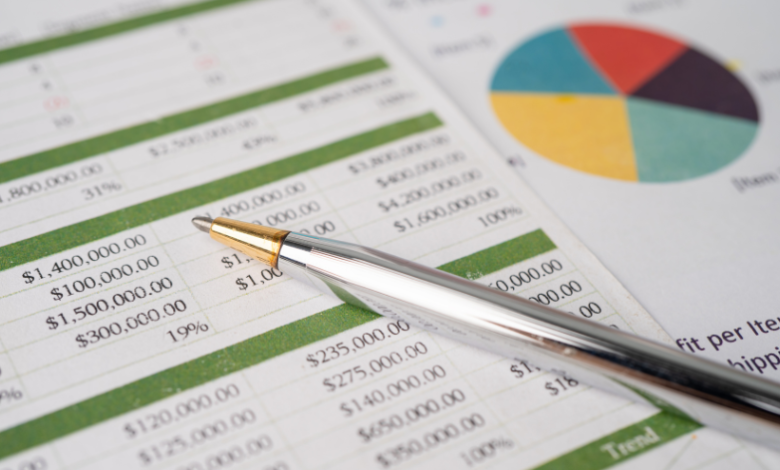Exd excel paper 2 for accounting

The Excel Diploma in Accounting is a milestone in the career of any aspiring accountant. It not only demonstrates a robust understanding of ethical and professional standards but also signals a strong command over complex accounting software — the backbone of modern finance. With a focus on Paper 2, we will unravel the layers of this examination and provide a comprehensive guide for those on the cusp of this significant achievement.
Understanding the Format
Before we immerse ourselves in the finer details, it’s crucial to comprehend the format of Paper 2. This particular section of the Excel Diploma in Accounting is specifically designed to test your practical application of Excel, a skill set that is indispensable in day-to-day accounting tasks. It consists of a series of real-world simulations, or ‘Scenarios’, that gauge your ability to manipulate data, solve problems, and present your findings effectively.
In this paper, candidates will face various challenges, each requiring a different set of Excel tools. From basic data entry to advanced functions, each task is designed to test your proficiency at every level. It’s also important to note that time management is critical. Candidates must complete all tasks within the given time frame to demonstrate not just their skill, but their efficiency.
Preparing for the Challenges Ahead
Preparation is the key to success in the Excel Diploma in Accounting. This is not an exam you can ‘cram’ for. It requires a methodical approach that includes both theoretical revision and practical application. Here are several strategies to help you excel in Paper 2:
Master Excel Basics
No matter how advanced the question, it is crucial to have a solid foundation of basic Excel skills. This includes knowing how to input data efficiently, understanding the importance of cell formatting, and being proficient at navigating worksheets. You should be able to perform these tasks without hesitation as they form the backbone of any Excel-related work.
Learn Essential Formulas and Functions
Familiarize yourself with the most commonly used Excel formulas and functions. These are the tools that will save you precious time and ensure accuracy in your calculations. Functions like SUM, AVERAGE, and VLOOKUP are used extensively in the Scenarios and mastering them is non-negotiable.
Explore Advanced Tools
In addition to basic skills and common functions, it is advisable to explore more advanced Excel tools such as PivotTables, Power Query, and scenario analysis. These not only provide a deeper level of analysis but also showcase your proficiency at utilizing Excel beyond the elementary.
Focus on Problem-solving Methods
The Scenarios often contain multiple parts, each requiring a unique approach. Learn the art of problem-solving within Excel. This includes breaking down complex tasks into manageable steps and utilizing the right tools for each.
Train Under Time Constraints
The real challenge in the Excel Diploma is not just solving problems but doing so within the allocated time. Practice various exercises with a stopwatch, focusing on accuracy and speed to ensure that you can confidently complete all tasks within the exam timeframe.
Understand Formatting and Data Presentation
Data presentation is as important as the calculations themselves. Learn to use charts, graphs, and other visual tools to convey your story effectively. Also, do not underestimate the importance of presenting the data neatly with consistent formatting.
Navigating the Scenarios
While the specific details of the scenarios are kept under wraps, there are certain themes that are commonly tested. These include financial modeling, data analysis, and report generation. It is important to create a mental map of how to approach these scenarios.
Financial Modeling
This often involves predicting financial outcomes and requires a strong understanding of formulas and functions. Start with understanding the nature of the data provided and the end goal. Break down the problem into individual variables and build the model step by step.
Data Analysis
In data analysis scenarios, you may be required to uncover trends or anomalies within a dataset. Focus on data filtering, sorting, and conditional formatting to make these stand out. Utilize pivot tables for a more organized analysis.
Report Generation
For report generation scenarios, think about the key insights the data provides and what would be most important to communicate. This is where charts, graphs, and well-structured tables come into play. Ensure your report is clear, concise, and tells the full story of the data.
Tactics for Tackling the Different Parts
Understanding how to tackle the variety of tasks presented in Paper 2 is as important as the knowledge and skills themselves. Here are some tactics to consider when you’re faced with certain types of questions:
Long Formatting Tasks
For tasks that involve a considerable amount of data formatting, consider automating the process as much as possible. Use tools like conditional formatting and cell referencing to ensure that your formatting is consistent and easily updated.
Calculation-Heavy Questions
When confronted with a task that requires extensive calculations, focus on structuring your data and formulas in a way that is easy to follow and audit. This will not only help you check for errors but also assist the examiner in understanding your process.
Visual Representation Requirements
If the question mandates a visual representation, such as a chart or graph, select the appropriate type that best presents the data. Always ensure that the visual is clear and accurately represents the underlying data to avoid any potential misinterpretation.
Final Preparation Tips
With the exam date fast approaching, these last-minute preparations can be the difference between a good and an excellent performance:
Practice with Past Papers
The best way to understand the level of the exam is to practice with past papers. This will give you insight into the types of questions asked and how they might be presented.
Create a Reference Sheet
Compile a reference sheet of the most common formulas and functions you may need, including their syntax. Having this on hand can save time and reduce the likelihood of forgetting a key element under pressure.
Stay Updated on Excel’s Tools
Excel is constantly evolving with new features and updates. Stay abreast of the latest tools and functionalities that might make an appearance on your exam.
Maintain a Cool Head
On the day of the exam, it’s easy to feel overwhelmed. Remember to stay calm and trust in your abilities. If a question is particularly challenging, move on and return to it later. It’s not always about getting every question correct, but about managing your time effectively to maximize your score.
The Excel Diploma in Accounting, and specifically Paper 2, is an opportunity to showcase your technical prowess. With diligent practice, strategic preparation, and a clear understanding of the exam format, you can tackle this test with confidence. Mastering this paper is not just a benchmark of your abilities; it’s a stepping stone to a successful career in accounting.

